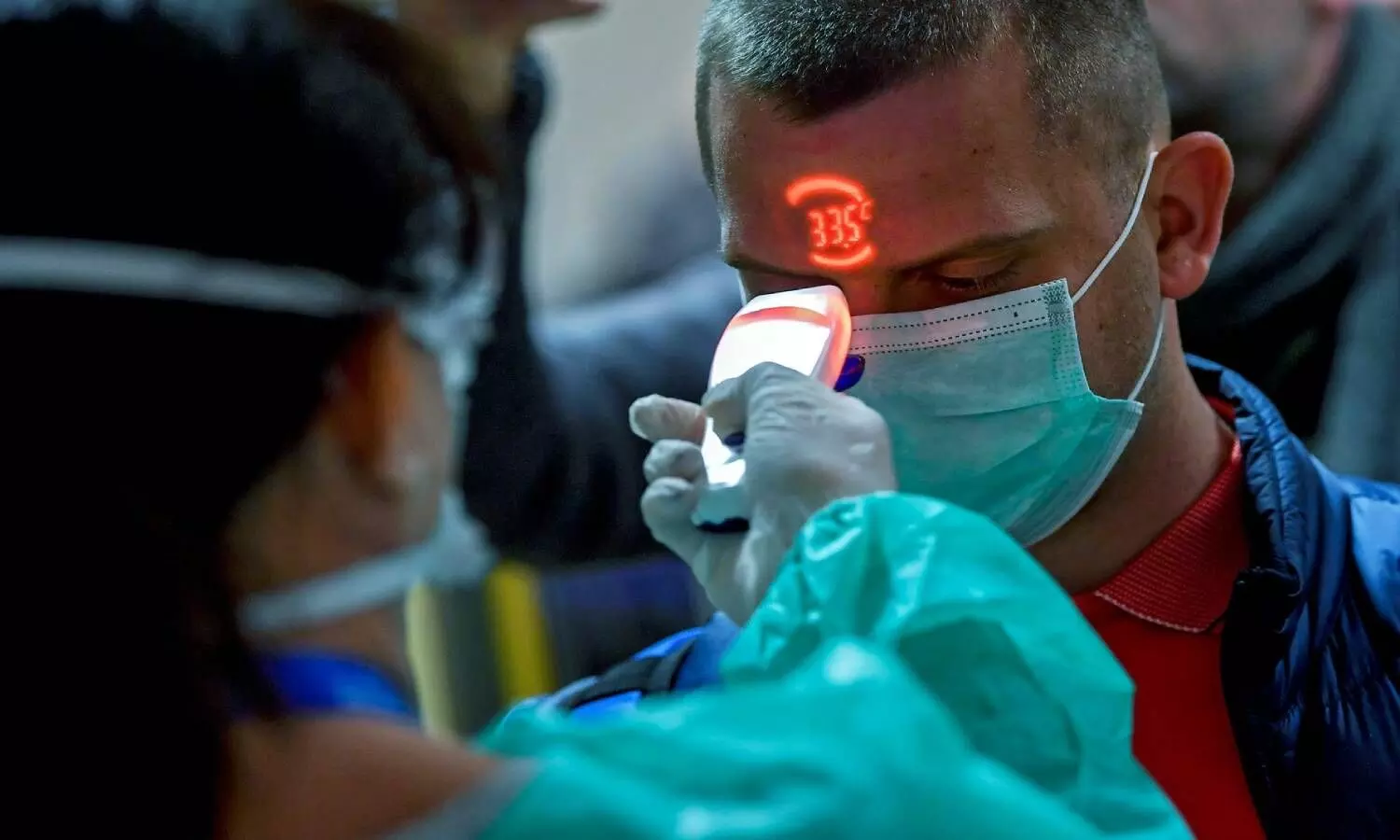COVID-19: "Double Mutant" N440K variant associated with immune escape found in Southern India
The Indian SARS-CoV-2 Consortium on Genomics (INSACOG) on Wednesday said a new "double mutant" variant of the Covid19 has been detected from samples collected in the country.
By Sumit Jha
Hyderabad: The Indian SARS-CoV-2 Consortium on Genomics (INSACOG) on Wednesday said a new "double mutant" variant of the Covid19 has been detected from samples collected in the country. Around 771 variants of concerns (VOCs) have been detected in 10787 positive samples shared by States and Union Territories.
INSACOG is a grouping of 10 National Laboratories that was established by the Union Ministry of Health and Family Welfare on December 25, 2020.
The N440K variant that is associated with immune escape has been found in 33% of samples from Andhra Pradesh and in 53 of 104 samples from Telangana. From Kerala 2032 samples (from all 14 districts) have been sequenced. The N440K variant that is associated with immune escape has been found in 123 samples from 11 districts. This variant has also been reported from 16 other countries including the UK, Denmark, Singapore, Japan, and Australia. As of now these can be at best said to be variants under investigation.
"This particular variant N440K doesn't seem to have any clinical significance. It is there for some time and quite common in many southern states including Kerala, Karnataka, Tamil Nadu, Andhra Pradesh, and Telangana" said Dr. Rakesh Mishra, Director, Centre for Cellular Microbiology, one of the members of INSACOG.
Of the total 771 VOCs, 736 samples were found positive for viruses of the UK (B.1.1.7) lineage. 34 samples were found positive for viruses of the South African (B.1.351) lineage. 1 sample was found positive for viruses of the Brazilian (P.1) lineage. The samples with these VOCs have been identified in 18 States of the country.
"Though VOCs and a new double mutant variant have been found in India. These have not been detected in numbers sufficient to either establish or direct relationship or explain the rapid increase in cases in some States. Genomic sequencing and epidemiological studies are continuing to further analyze the situation," said MoHFW.
Dr. Rakesh Mishra said that these variants are in very small numbers. "Only 10-20 percent cases are of the new variants. The reason for the spurt in cases in the country are festivals, congregation, political rallies, carelessness at malls and cinema halls, the opening of schools where the people wear the mask but do not cover their nose and mouth. Carelessness is being committed by the people, that's the reason for the increase in cases, Not the Variants," he said.
Since INSACOG initiated its work, Genome sequencing and analysis have been carried out on samples from arriving international travelers, contacts of those positive for VOC, and community samples from most of the States at INSACOG partner laboratories which are 10 in number.
INSACOG has since then carried out genomic sequencing and analysis of circulating COVID-19 viruses and correlating epidemiological trends with genomic variants. Genomic variants of various viruses are a natural phenomenon and are found in almost all countries.
The analysis of samples from Maharashtra has revealed that compared to December 2020, there has been an increase in the fraction of samples with the E484Q and L452R mutations. Such mutations confer immune escape and increased infectivity. These mutations have been found in about 15-20% of samples and do not match any previously cataloged VOCs. These have been categorized as VOCs but require the same epidemiological and public health response of "increased testing, comprehensive tracking of close contacts, prompt isolation of positive cases & contacts as well as treatment as per National Treatment Protocol" by the States/UTs.
"We are collecting samples constantly. When the UK variant came, we started collecting samples every month. With the increase in resources, we are able to see the changes in virus behavior. It will significantly lead us to know about the virus and the ways to control it," said Dr. Rakesh Mishra.